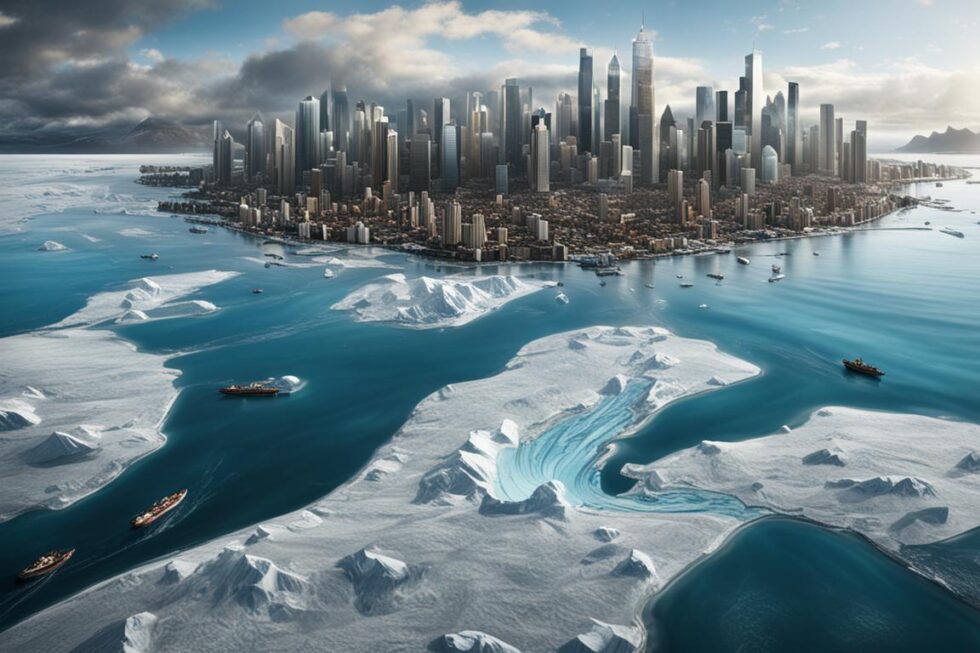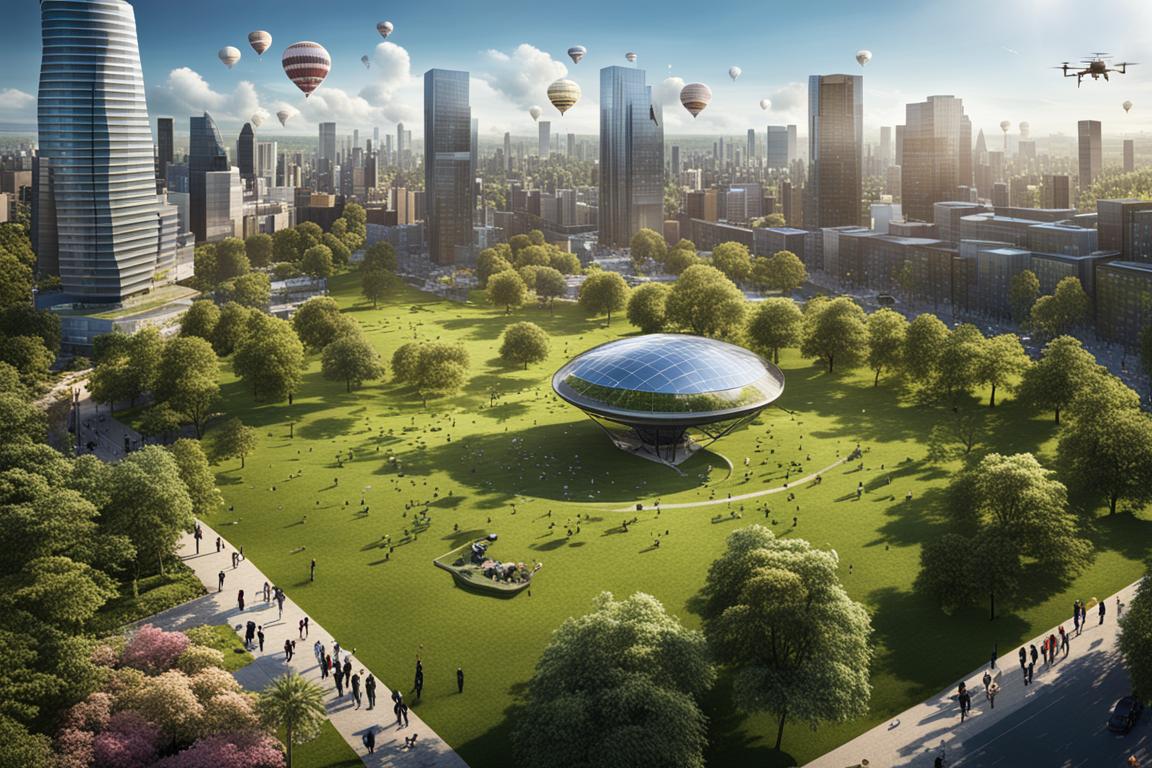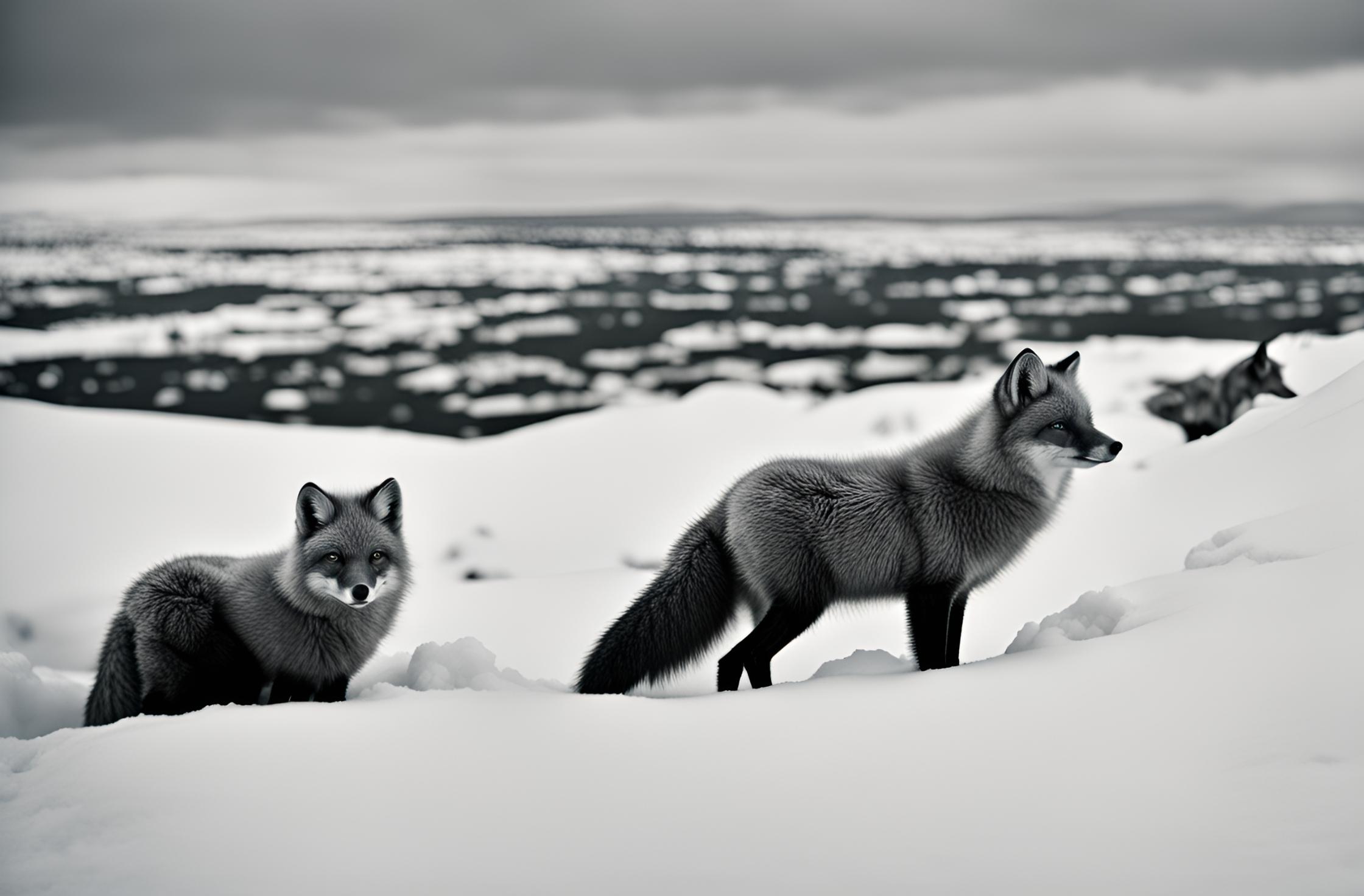
In the year 2100, the world faced the catastrophic reality of the polar ice caps completely melting. This unprecedented event, driven by accelerated climate change and rising global temperatures, had profound and far-reaching impacts on the environment, human society, and global geopolitics.
The immediate and most dramatic effect was the rise in sea levels. With the complete melting of the polar ice caps, sea levels rose by approximately 70 meters (230 feet), submerging coastal cities and low-lying areas around the world. Major metropolises like New York, London, Shanghai, and Mumbai found themselves underwater, their iconic skylines lost to the encroaching seas. Entire nations, particularly island countries such as the Maldives and Tuvalu, were wiped off the map, their populations forced to seek refuge elsewhere.

Massive migration ensued as billions of people were displaced from their homes. Inland cities and higher-altitude regions experienced unprecedented population booms, straining resources and infrastructure. Countries with more land and higher elevations, such as Canada and Russia, saw an influx of climate refugees, leading to significant demographic and cultural shifts. The global community grappled with the immense challenge of accommodating and integrating these displaced populations.
Agriculture and food security were profoundly impacted. The inundation of fertile coastal plains and river deltas led to a loss of some of the world’s most productive agricultural lands. Saline intrusion rendered many remaining coastal areas unsuitable for farming, further exacerbating food shortages. Governments and scientists raced to develop new agricultural technologies and practices, such as vertical farming and genetically modified crops, to sustain the global population.
The loss of the polar ice caps also disrupted global climate patterns. The polar regions, once crucial for regulating Earth’s temperature and weather systems, no longer existed in their frozen state. Ocean currents, which relied on the temperature gradient between the poles and the equator, shifted dramatically. This led to more frequent and severe weather events, including hurricanes, droughts, and heatwaves, creating a new level of unpredictability and danger in daily life.
The disappearance of the polar ice caps had dire consequences for marine ecosystems as well. The influx of fresh water into the oceans disrupted salinity levels, affecting marine life and fisheries. Coral reefs, already under threat from rising temperatures and acidification, faced further stress, leading to widespread bleaching and loss of biodiversity. The Arctic and Antarctic ecosystems, home to unique species such as polar bears and penguins, were irrevocably altered.
Economic impacts were severe and multifaceted. The loss of coastal infrastructure, ports, and industries caused trillions of dollars in damages. Insurance companies faced bankruptcy, unable to cover the vast scale of the losses. Global trade routes were disrupted, necessitating new logistics and transportation strategies. Economies heavily reliant on coastal tourism, fisheries, and agriculture faced collapse, while industries related to climate adaptation and renewable energy saw growth.
Geopolitically, the melting of the polar ice caps reshaped the global balance of power. New shipping routes opened in the Arctic, leading to territorial disputes and strategic competition over resources. The Arctic region, now accessible, became a focal point for oil, gas, and mineral exploration, with countries vying for control. International tensions rose as nations sought to secure their interests in this new frontier, leading to diplomatic and military confrontations.
In response to these challenges, the global community had to come together like never before. International organizations, governments, and NGOs collaborated on unprecedented scales to address the humanitarian, environmental, and economic crises. Massive investments were made in sustainable technologies, renewable energy, and climate resilience. Efforts to mitigate further climate change intensified, with stringent global agreements to reduce greenhouse gas emissions and restore natural ecosystems.
Human ingenuity and resilience were put to the test. Innovations in architecture and urban planning led to the development of floating cities and amphibious infrastructure. Renewable energy sources, such as solar, wind, and tidal power, became the backbone of the global energy supply. Communities adapted to new ways of living, with a focus on sustainability, resource efficiency, and disaster preparedness.

Educational initiatives emphasized the importance of environmental stewardship and climate science, fostering a new generation of leaders and citizens committed to protecting the planet. Cultural and artistic expressions reflected the collective trauma and hope, as humanity navigated its way through the challenges of a radically changed world.
In the face of immense adversity, humanity’s capacity for cooperation, innovation, and adaptation shone through. The complete melting of the polar ice caps served as a stark reminder of the interconnectedness of Earth’s systems and the need for global solidarity in addressing environmental crises. While the path was fraught with difficulties, the world emerged with a renewed commitment to creating a sustainable and resilient future for generations to come.




